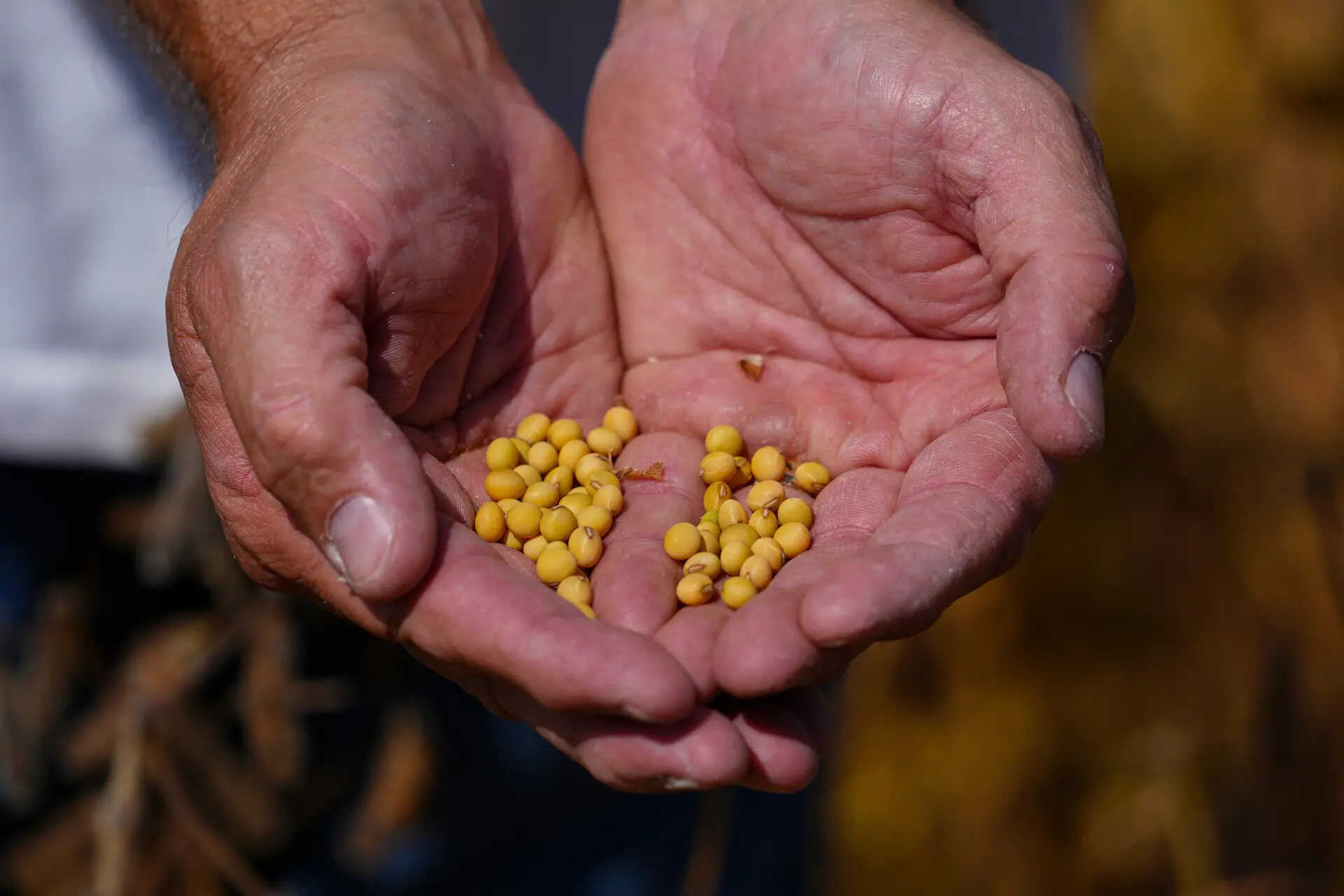US farmers face billions in losses as China boycotts soybeans amid trade tensions. Treasury Secretary Scott Bessent announced substantial government support for the farming community, particularly soybean growers, to be unveiled next Tuesday. He hopes an upcoming Trump-Xi meeting will resolve the trade dispute, which has seen China use farmers as “pawns.”
When Soybeans Became Pawns: A Trade War Story
The fields of the American Midwest, normally buzzing with the promise of a bountiful harvest, felt a little different some time ago. The air hung heavy, not just with humidity, but with uncertainty. The humble soybean, a staple of American agriculture, found itself caught in the crossfire of a high-stakes trade war between the United States and China. What unfolded was a complex dance of economics, politics, and the livelihoods of American farmers.
It all started with tariffs. The Trump administration, aiming to address what it saw as unfair trade practices, slapped tariffs on a range of Chinese goods. China retaliated in kind, targeting key American exports, including soybeans. Suddenly, a product once in high demand in China found itself facing a closed door.
China’s move wasn’t just about economics; it was a strategic maneuver. Soybeans are a crucial component of animal feed in China, essential for its massive pork industry. By refusing to purchase American soybeans, China aimed to inflict economic pain on a politically important segment of the American electorate – farmers. These farmers had largely supported Trump, and the hope was that economic hardship would translate into political pressure.
The impact was immediate. Soybean prices plummeted, and farmers faced the prospect of unsold crops and dwindling incomes. Silos overflowed, and the market for US soybeans dried up almost overnight. For many family farms, already struggling with rising costs and unpredictable weather, this was a devastating blow.
But the story doesn’t end there. The Trump administration, recognizing the severity of the situation, stepped in with a plan to support American farmers. A multi-billion dollar aid package was announced, designed to cushion the blow of the trade war and provide farmers with some financial relief. This wasn’t just a bailout; it was an attempt to demonstrate the administration’s commitment to its base and to send a message to China that the U.S. wouldn’t back down.

The aid package, while welcomed by many farmers, wasn’t without its critics. Some argued that it was a short-term fix that didn’t address the underlying problems. Others worried about the long-term consequences of government intervention in the market. There was also the question of whether the aid would truly reach all the farmers who needed it most.
Beyond the immediate financial assistance, the trade war forced American farmers to re-evaluate their markets and strategies. Some began exploring new export destinations, seeking to diversify their reliance on China. Others looked for ways to add value to their crops, processing soybeans into products like soymilk and tofu for domestic consumption. Innovation and adaptation became key to survival in a suddenly unpredictable market.
The situation with China also underscored the interconnectedness of the global economy. A trade dispute between two superpowers could have ripple effects across the world, impacting farmers in Brazil, Argentina, and other soybean-producing nations. It served as a stark reminder that trade is not just about economics; it’s about relationships, geopolitics, and the delicate balance of global power.
The long-term consequences of this trade war on the American soybean industry are still unfolding. While tensions between the US and China have eased somewhat, the experience has left a lasting mark. Farmers have learned the importance of diversification, resilience, and the need to stay informed about the ever-changing landscape of global trade.
The story of the soybean is a microcosm of the larger challenges facing American agriculture in the 21st century. It highlights the risks of relying too heavily on a single market, the importance of government support during times of crisis, and the need for farmers to adapt and innovate in order to thrive. It also demonstrates the profound impact that political decisions can have on the lives and livelihoods of ordinary people. Find out more about navigating fluctuating markets and increasing farm profitability on our resource page.
In conclusion, the soybean saga serves as a powerful lesson in the complexities of global trade and the vulnerabilities of agricultural economies. While government support offered temporary relief, the incident highlighted the critical need for long-term strategies that foster diversification, resilience, and innovation within the American farming sector. The future of US soybean farmers hinges on their ability to navigate an increasingly unpredictable global landscape and adapt to the shifting tides of international trade relations.







